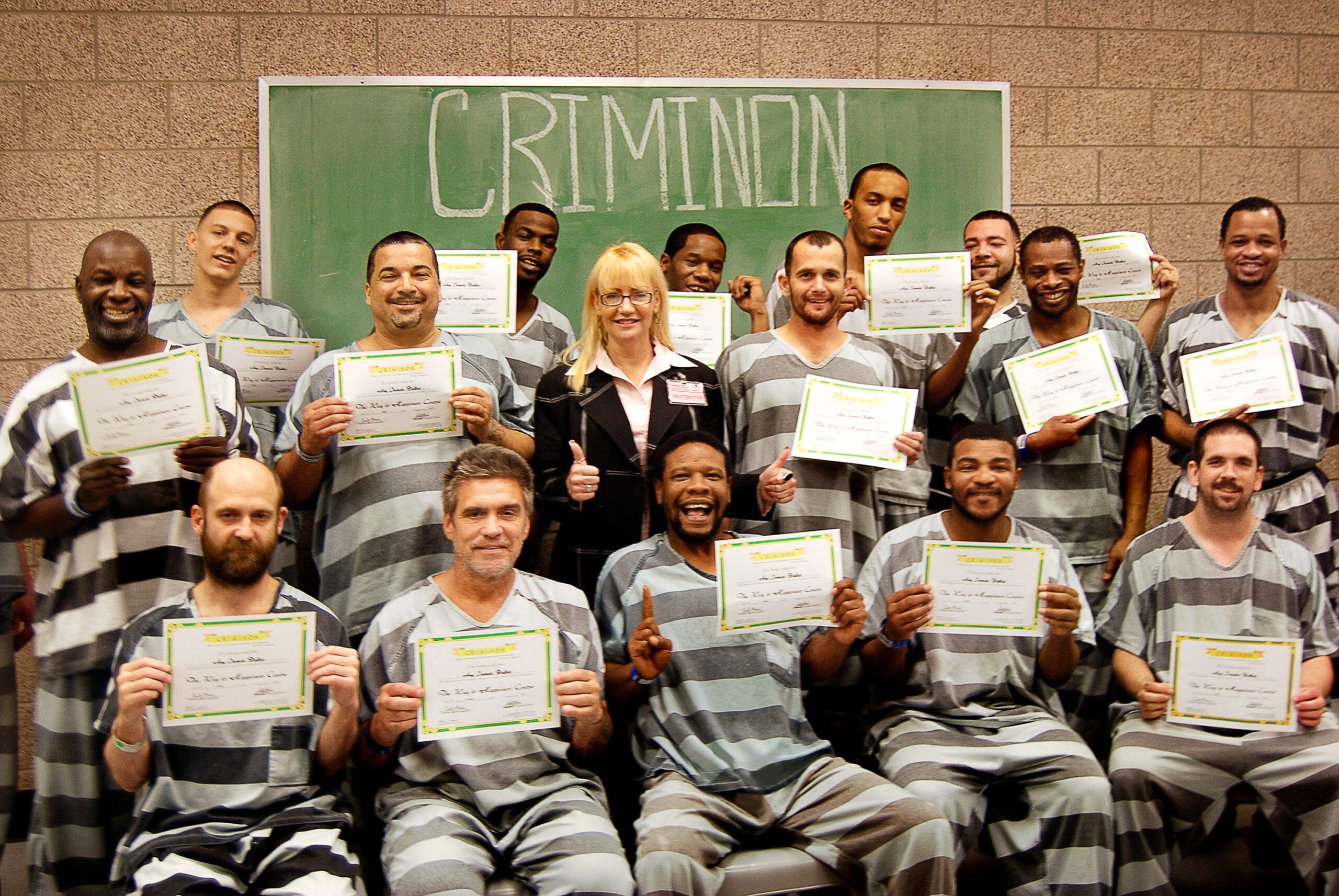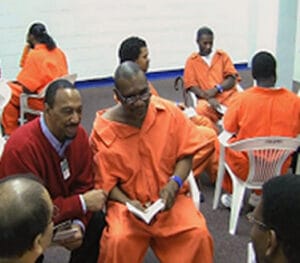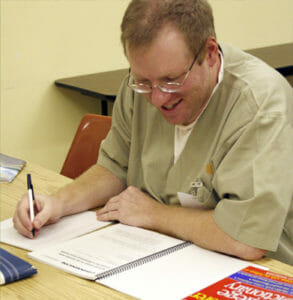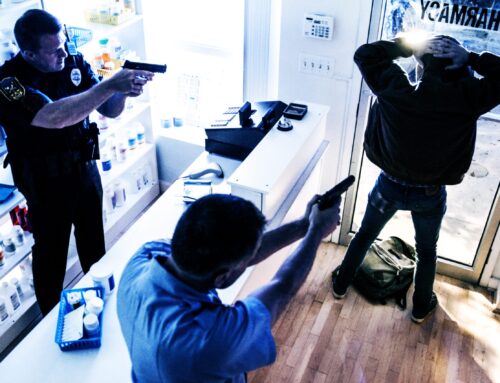What Are Examples of Rehabilitative Services for Offenders That Work?

The purpose of prisons is twofold:
- First, prisons aim to remove from society people who may cause harm to others.
- Just as critically, prisons are also mandated to rehabilitate and reform prisoners, so by the time they are released, such individuals are no longer compelled to commit crimes and thus endanger themselves and others.
Prisons generally accomplish the first aspect of their mandate very well. As the decades have gone by, prisons have refined their incarceration techniques to a point where prison breakouts are relatively rare, ensuring dangerous people are kept away from society.
However, the second aspect of the purpose of prisons leaves much to be desired. The high recidivism rate in the U.S. (one of the highest in the world) suggests there is work to be done in improving how prisons attempt to reform offenders.
Recidivism Paints a Grim Portrayal of the Low Success of the Prison System
The National Institute of Justice defines recidivism as “one of the most fundamental concepts in criminal justice. It refers to a person’s relapse into criminal behavior, often after the person receives sanctions or undergoes intervention for a previous crime.” Sadly, recidivism is a serious problem in America’s criminal justice system, one that state and federal institutions have yet to solve.1
The recidivism rate in the U.S. is quite alarming. According to a 2022 report by the Office of Community Oriented Policing Services (a component of the United States Department of Justice), nearly one-half of all federal prisoners are rearrested and incarcerated again within eight years of their release from prison. For state prisoners, recidivism is even worse. About 68% of all prisoners released from state prisons are rearrested within three years of their release. Also for state prisoners, the rearrest rate increases to 79% after five years and 83% after nine years.2
That means that since most offenders in America are locked up in state prisons, the overwhelming majority of offenders become rearrested and re-incarcerated within a decade of finishing their prison sentence.
Reform Programs that Help Prepare Incarcerated Individuals for a Productive and Ethical Return to Society

It seems clear that if offenders are not given the tools they need to overcome their incentives for unlawful behavior, no amount of incarceration will prevent them from committing crimes again in the future. This is where Criminon comes in.
Criminon—a coined term meaning “without crime”—is a nonprofit organization dedicated to criminal rehabilitation and reform. Criminon has been delivering courses and workshops to inmates and staff involved in the correctional system in the United States since 1989. Criminon accomplishes its work through services that improve self-respect, increase relationship skills, and break destructive habits. Some of the courses offered by Criminon to truly reform offenders include:
Learning Skills for Life. The Learning Skills for Life course teaches literacy and learning skills. Multiple studies have shown the connection between illiteracy and crime. Failures in the school are linked to crime on the street. This program helps inmates improve their literacy and learning skills to achieve higher educational attainment, train for a job, and learn new skills.3

The Way to Happiness Course. This course teaches inmates a non-religious, common-sense moral code of 21 precepts. Each precept deals with a specific area or activity of life and explains why following such a code of conduct will lead to a much better life.
Personal Values and Integrity Course. Inmates were often never taught about ethics, honesty, and morals. Further, the loss of integrity and self-respect often leads to a descent into crime. This course begins with basic principles on good, moral living and culminates with exact steps the student can use to help regain their integrity.
Improving Conditions in Life Course. Criminal behavior done over many years becomes very difficult to change. This course teaches the exact steps one must take to improve the condition of one’s behavior.
Understanding & Overcoming Addiction. Drug-related issues are a major reason why so many people are in jails, prisons, and federal penitentiaries. This course educates inmates on addiction and provides the tools they need to overcome substance abuse.

Ups and Downs in Life Course. One’s criminal behavior is often not an original idea, meaning people are often compelled to commit crimes by the influence of the company they keep. This course teaches people how to assess others in their lives and determine who is a positive influence and who is not.
Successful Parenting Skills Course. Parents teach lessons to children, who then grow up to teach those same lessons to their children. There’s a reason why inmates overwhelmingly grew up in households where crimes were committed by one or both parents. This course teaches inmates how to break the cycle.
Communication Skills Course. In some way, communication failures rest at the foundation of all breakdowns in interpersonal relations, especially those that lead to crime. Criminal behavior and violence are not the best ways to solve difficult life situations, but good communication is. This course teaches inmates how to communicate effectively and how to approach and handle any life situation with communication alone.
Reentry Programs and Vocational Training Are Also Key
Reform programs like those offered by Criminon significantly help to facilitate the reform that offenders must experience to maintain a crime-free life after prison.

In addition to reform programs, other aspects of an inmate’s transition back into society significantly reduce recidivism. Reentry programs, vocational training, and other services that help formerly incarcerated individuals arrange housing, sign up for school classes, obtain a driver’s license, and secure a job are also incredibly important because they enable reformed offenders to reintegrate into society and use their new-found skills for the betterment of themselves and their family members, loved ones, and community members. Such programs have a direct impact on reducing recidivism because they provide former offenders with the resources they need to tackle life outside of prison, but they do so in such a way that does not compel them to reoffend.
When prison systems and other groups set up a former offender’s return to society so it looks like a runway to success rather than a path strewn with boulders and other stumbling blocks and obstacles, former offenders are much more likely to experience a meaningful, ethical, upstanding, and productive life.
Sources:
- NIJ. “Recidivism.” National Institute of Justice, 2024. nij.ojp.gov
- COPS. “A Second Chance: The Impact of Unsuccessful Reentry and the Need for Reintegration Resources in Communities.” Office of Community Oriented Policing Services, 2022. cops.usdoj.gov
- ELF. “Early Literacy Connection to Incarceration.” Early Literacy Foundation, 2024. governorsfoundation.org




